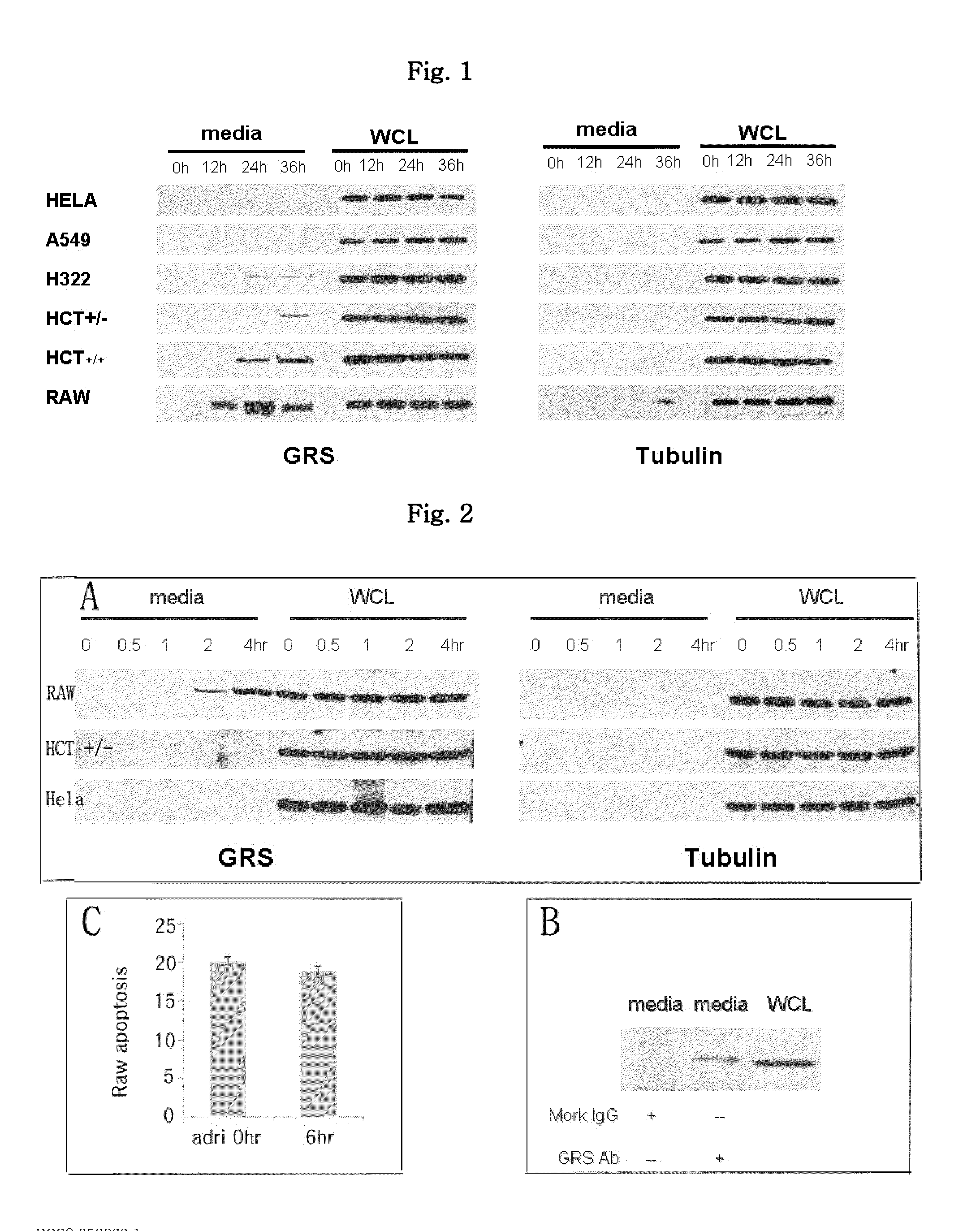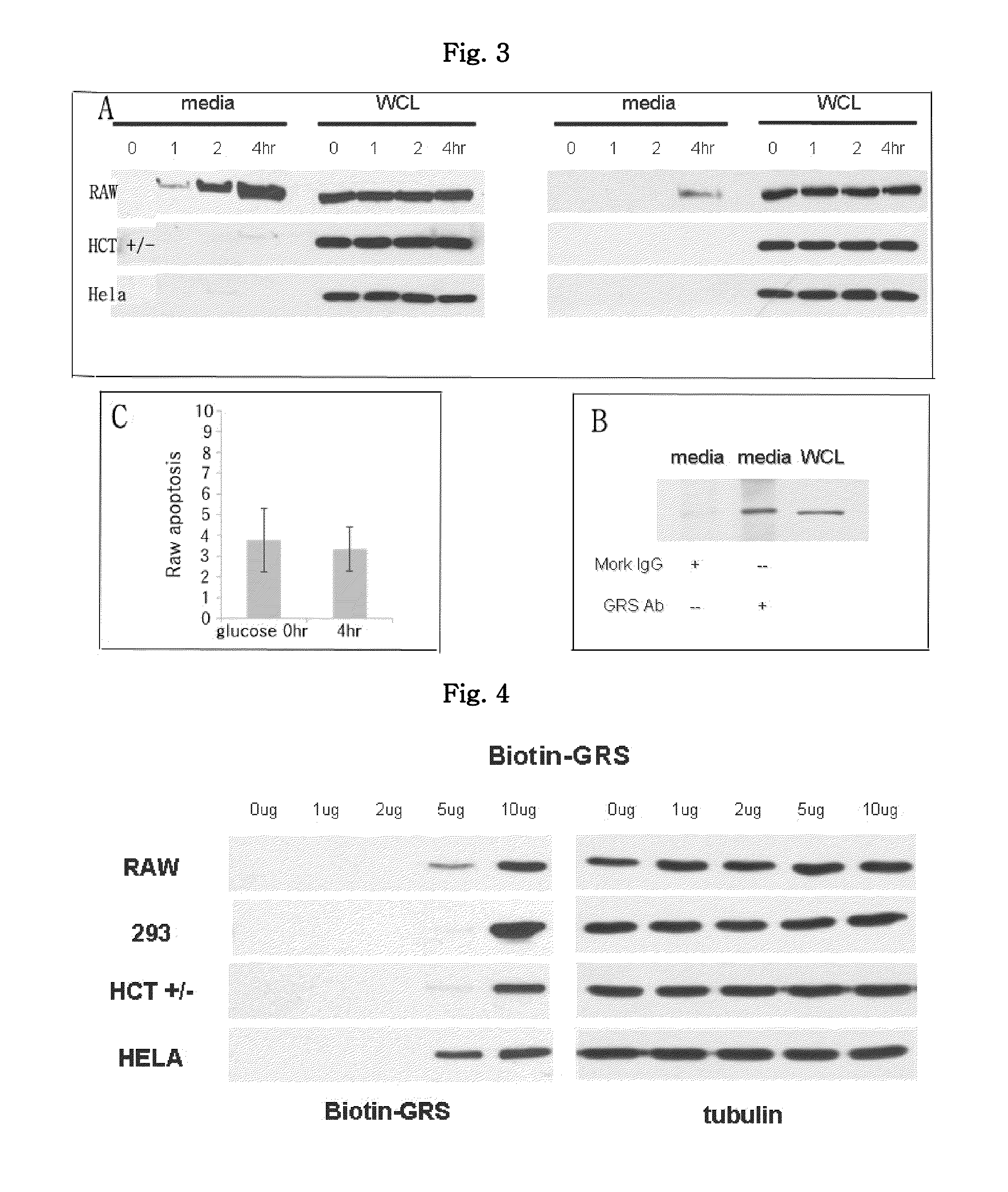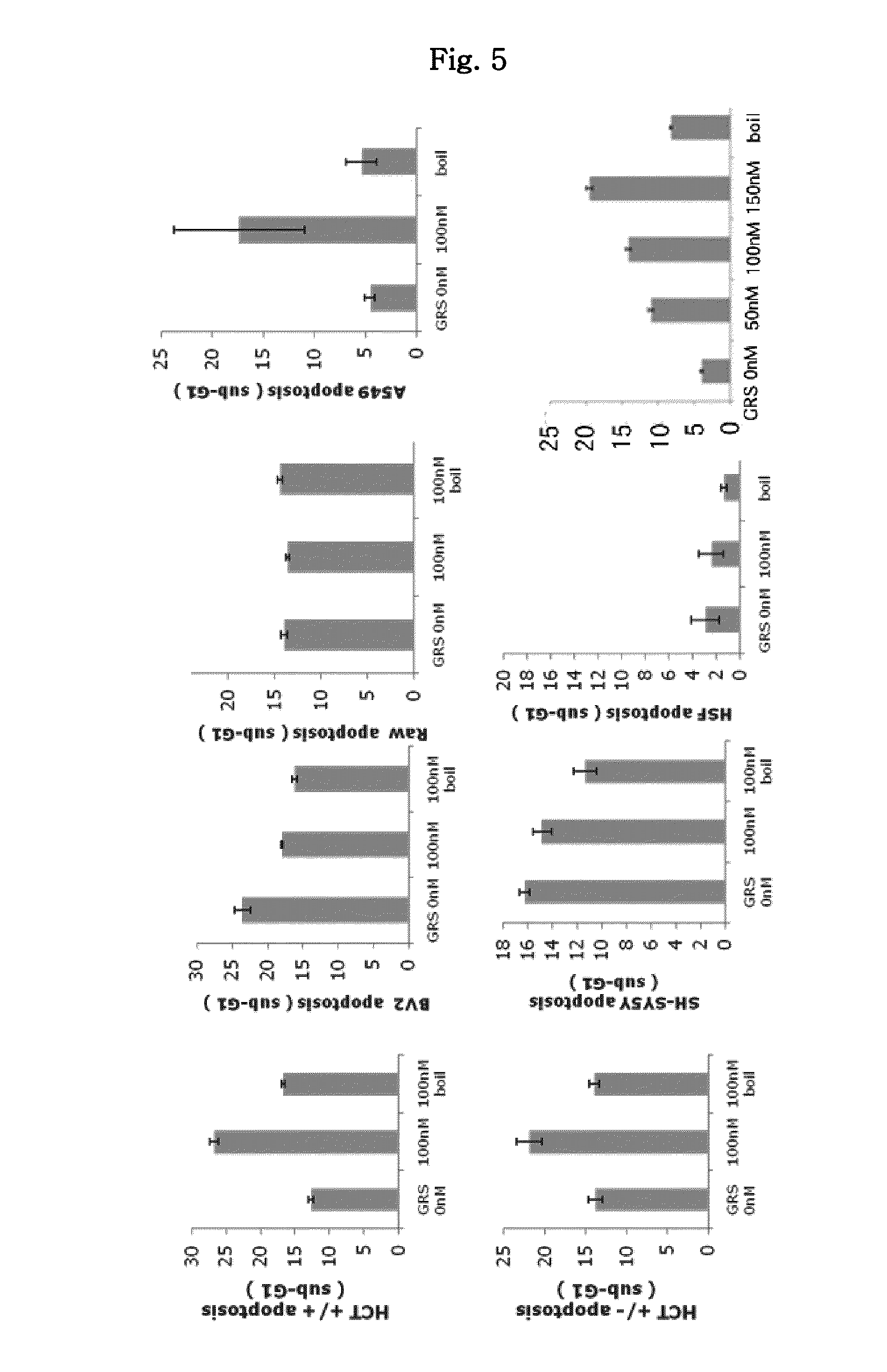Novel uses of grs proteins or fragments thereof
a technology of glycyltrna synthetase and proteins, which is applied in the field of new uses of grs proteins or fragments, can solve the problems of not widely used anticancer agents, which are known to kill not only cancer cells but also normal cells
- Summary
- Abstract
- Description
- Claims
- Application Information
AI Technical Summary
Benefits of technology
Problems solved by technology
Method used
Image
Examples
example 1
Confirmation of Secretion of GRS Protein from Macrophages in Serum-Starved Condition
[0070]HeLa, A549, H322, HCT+ / − and HCT+ / + cancer cells and macrophage RAW cells were placed on a 35-mm dish, cultured for 18 hours, and then washed with serum-starved medium (1 mL). 0, 12, 24 and 36 hours after the washing, proteins were collected from the medium and the whole cell lysate, and it was investigated whether the GRS protein was secreted from the cells through Western blotting using anti-GRS anti-tubulin antibodies.
[0071]Specifically, in order to collect the proteins from the medium, the cell culture was centrifuged at a rate of 3000 rpm at 4° C. for 10 minutes. Then, after centrifuging further at a rate of 20,000 g at 4° C. for 15 minutes and separating the supernatant, 100% trichloroacetic acid (TCA, 100 μL) was added thereto (final concentration=10%). After incubating overnight at 4° C. to precipitate the protein, centrifugation was carried out at a rate of 18,000 g at 4° C. for 10 min...
example 2
Secretion of GRS Protein from Macrophages During Induced Apoptosis
[0075] After Treatment with Adriamycin
[0076]Given the result that the GRS protein is secreted only after the serum-starved condition is prolonged, it was investigated whether the secretion of the GRS protein is because of apoptosis or loss of the aminoacyl activity of the GRS protein. Specifically, HeLa and HCT+ / − cancer cells and macrophage RAW cells were placed on a 35-mm dish, cultured for 18 hours, washed with serum-starved medium (1 mL), and then treated with 1 μg / mL Adriamycin. 0, 0.5, 1, 2 and 4 hours after the treatment, proteins were collected from the medium and the whole cell lysate, and it was investigated whether the GRS protein was secreted from the cells through Western blotting using anti-GRS anti-tubulin antibodies, in the same manner as in Example 1. The result is shown in FIG. 2A.
[0077]As seen from FIG. 2A, the GRS protein was specifically secreted only from the macrophages as in Example 1 when apop...
example 3
Confirmation of Attachment of GRS Protein to Cells
[0089]HeLa and HCT+ / − cancer cells, normal 293 cells and macrophage RAW cells were placed on a 35-mm dish, cultured for 18 hours, and then washed with serum-starved medium (1 mL). Then, after adding 0, 1, 2, 5 or 10 μg of biotinylated GRS protein, proteins were collected from the whole cell lysate in the same manner as in Example 1. Then, Western blotting was performed using streptavidin-HRP and anti-tubulin antibodies. The result is shown in FIG. 4.
[0090]As seen from FIG. 4, the GRS protein secreted from the macrophages was attached to the surface of other cells. Thus, further experiment was carried out in order to investigate what functionality can be performed by the GRS protein.
PUM
| Property | Measurement | Unit |
|---|---|---|
| length | aaaaa | aaaaa |
| length | aaaaa | aaaaa |
| pH | aaaaa | aaaaa |
Abstract
Description
Claims
Application Information
 Login to View More
Login to View More - R&D
- Intellectual Property
- Life Sciences
- Materials
- Tech Scout
- Unparalleled Data Quality
- Higher Quality Content
- 60% Fewer Hallucinations
Browse by: Latest US Patents, China's latest patents, Technical Efficacy Thesaurus, Application Domain, Technology Topic, Popular Technical Reports.
© 2025 PatSnap. All rights reserved.Legal|Privacy policy|Modern Slavery Act Transparency Statement|Sitemap|About US| Contact US: help@patsnap.com



